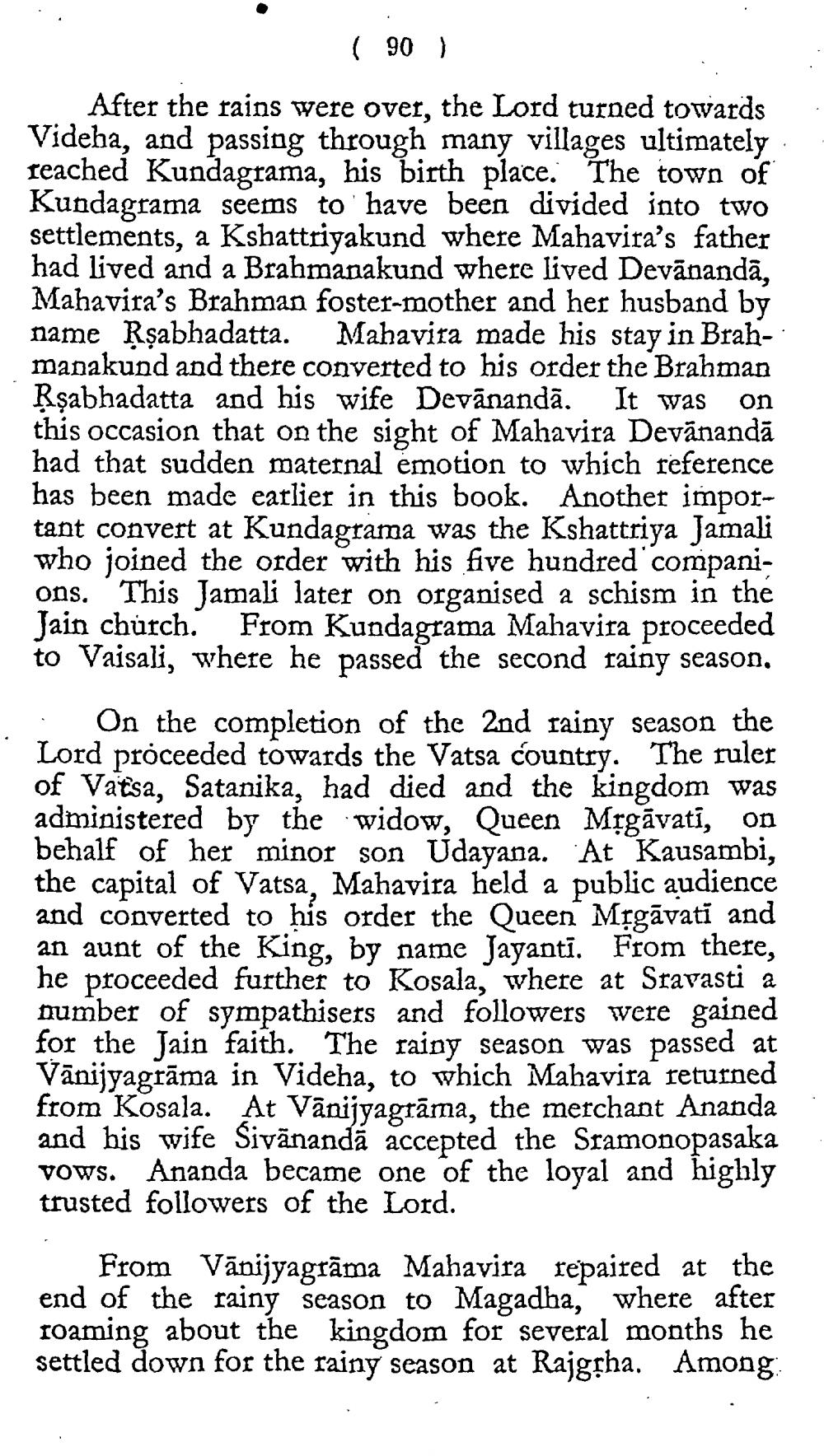________________
( 90
)
After the rains were over, the Lord turned towards Videha, and passing through many villages ultimately reached Kundagrama, his birth place. The town of Kundagrama seems to have been divided into two settlements, a Kshattriyakund where Mahavira's father had lived and a Brahmanakund where lived Devānanda, Mahavira's Brahman foster-mother and her husband by name Rsabhadatta. Mahavira made his stay in Brahmanakund and there converted to his order the Brahman Rşabhadatta and his wife Devānandā. It was on this occasion that on the sight of Mahavira Devānandā had that sudden maternal emotion to which reference has been made earlier in this book. Another important convert at Kundagrama was the Kshattriya Jamali who joined the order with his five hundred companions. This Jamali later on organised a schism in the Jain church. From Kunda grama Mahavira proceeded to Vaisali, where he passed the second rainy season.
. On the completion of the 2nd rainy season the Lord proceeded towards the Vatsa country. The ruler of Vatsa, Satanika, had died and the kingdom was administered by the widow, Queen Mrgāvati, on behalf of her minor son Udayana. At Kausambi, the capital of Vatsa, Mahavira held a public audience and converted to his order the Queen Mțgāvati and an aunt of the King, by name Jayanti. From there, he proceeded further tó Kosala, where at Sravasti a mumber of sympathisers and followers were gained for the Jain faith. The rainy season was passed at Vānijyagrāma in Videha, to which Mahavira returned from Kosala. At Vānijyagrāma, the merchant Ananda and his wife Sivānanda accepted the Sramonopasaka vows. Ananda became one of the loyal and highly trusted followers of the Lord.
From Vānijyagrāma Mahavira repaired at the end of the rainy season to Magadha, where after roaming about the kingdom for several months he settled down for the rainy season at Rajgsha. Among




